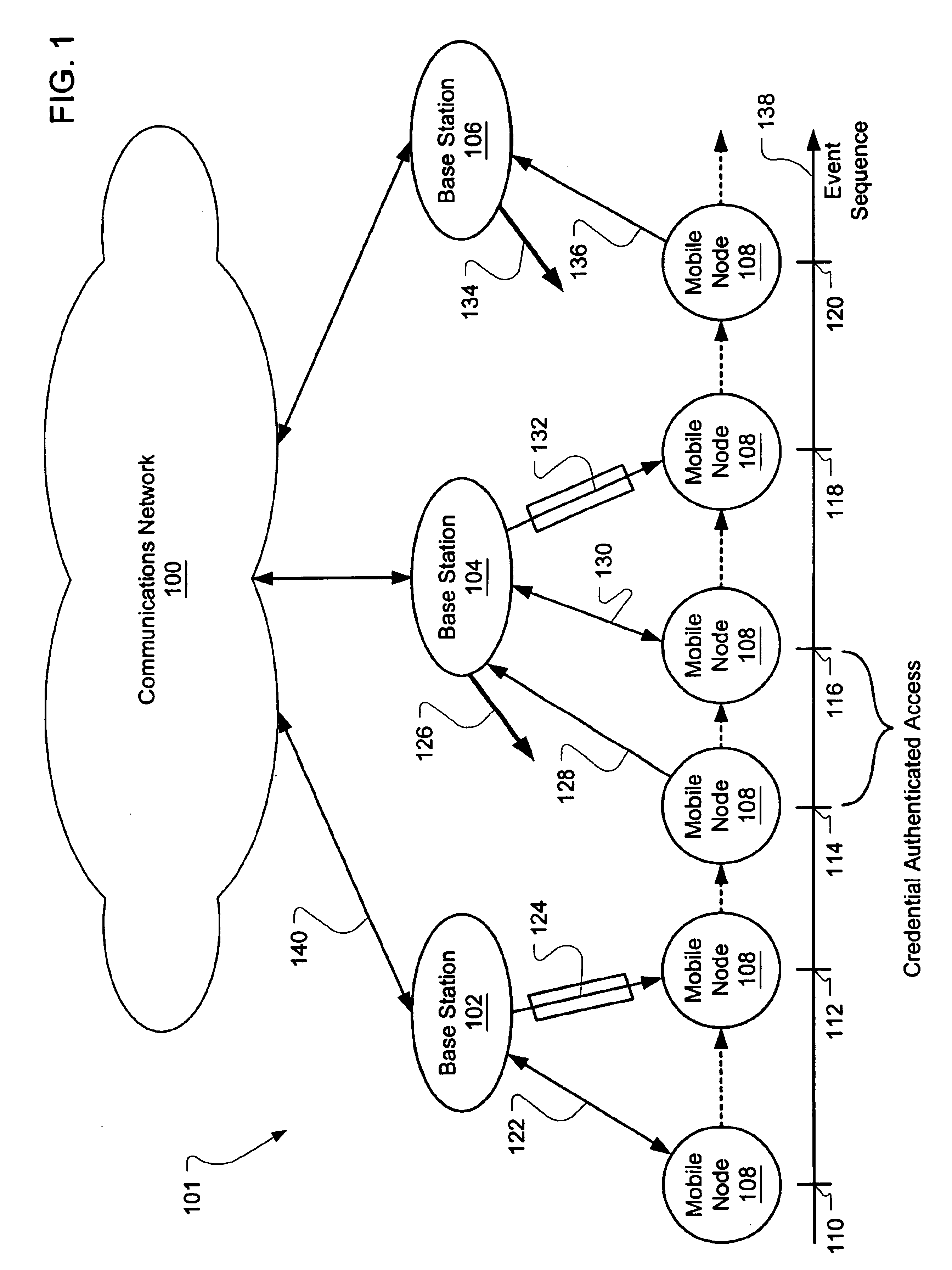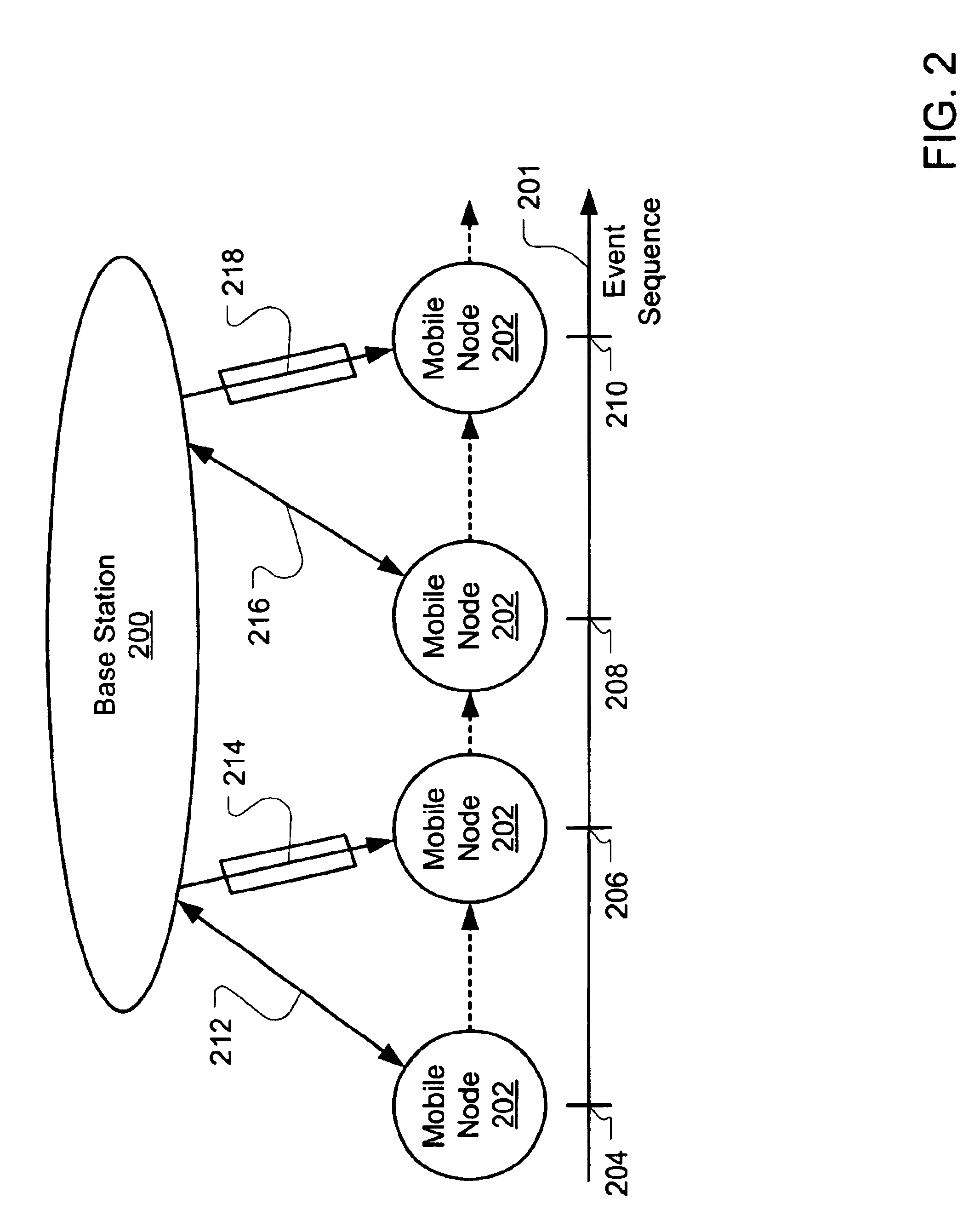Mobile authentication system with reduced authentication delay
a mobile authentication and delay technology, applied in the field of mobile communication, can solve the problems of reducing the qos experienced by the mobile user, the variable quality of the service provided, and the problem of real-time services, so as to reduce the service latency and minimize the effect of service latency
- Summary
- Abstract
- Description
- Claims
- Application Information
AI Technical Summary
Benefits of technology
Problems solved by technology
Method used
Image
Examples
second embodiment
Accordingly, in the second embodiment, the unsigned and encrypted credential can take the form:
Credential=EKnet(Kcred, trust parameters, f(2)Knet(Kcred, trust parameters))
where Knet is the secret key that is shared by the base stations, Kcred is the secret credential key received by the mobile node from the base station in association with the credential, and the keyed one-way function f(2)Knet replaces the keyed signature of the first embodiment. This cryptographic association between the secret credential key and the credential prevents undetected modification of the credential by the mobile node.
[0057]Therefore, in summary of the protocol in the second embodiment, relevant communications involving the mobile node include the following, relative to the communications in FIG. 3:[0058](1) Communication 316 from base station 1 to the mobile node:
Kcred, EKnet(Kcred, trust parameters, f(2)Knet(Kcred, trust parameters))[0059]Note that Kcred is sent through a secure communications link.[...
PUM
 Login to View More
Login to View More Abstract
Description
Claims
Application Information
 Login to View More
Login to View More - R&D
- Intellectual Property
- Life Sciences
- Materials
- Tech Scout
- Unparalleled Data Quality
- Higher Quality Content
- 60% Fewer Hallucinations
Browse by: Latest US Patents, China's latest patents, Technical Efficacy Thesaurus, Application Domain, Technology Topic, Popular Technical Reports.
© 2025 PatSnap. All rights reserved.Legal|Privacy policy|Modern Slavery Act Transparency Statement|Sitemap|About US| Contact US: help@patsnap.com



